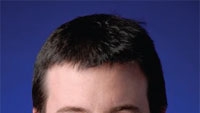Keeping the industry CALM

The biggest challenge facing broadcasters isn't the economy, according to Tim Carroll, president of Linear Acoustic; it is understanding how best to implement the appropriate technology to guarantee compliance with the CALM (Commercial Advertisement Loudness Mitigation) Act.
The new law has stimulated broadcasters to implement the necessary technology — including systems that feature loudness control, embedded HD-SDI audio, built-in Dolby AC-3 encoding, dual upmixing and metadata management, as well as full-time two-channel downmixing to support legacy stereo or analog paths — and Carroll now sees a “palpable re-focus of attention” on the audio distribution process and ensuring audio level consistency.
Carroll, who is actively involved in the development of standards within the ATSC and other international standards groups, said the balance between real-time and file-based loudness control systems seems to be evening out. This is good for controlling loudness and ensuring high audio quality. Broadcasters are getting more serious about metering and attempting to pre-correct signal level problems where necessary.
To help with the transition to CALM-compliant systems, Linear Acoustic has a team of field application engineers who support broadcasters and systems integrators both remotely and on-site. Carroll sees consultation as a critically important part of the process for the customer and a valuable learning experience for everyone involved.
Going into this year's NAB, Carroll said he thinks broadcasters are ready to invest in technology that they needed a few years ago but held off due to the poor economy. However, this two-year spending hiatus has been beneficial because it has allowed audio metering and analysis technologies to become more refined and, in some cases, more compact and less expensive. This, plus the very serious attention being paid to the CALM Act, is helping stations (and others) move to the next level of broadcast audio operations and ensuring that consumers get a good television experience.
The professional video industry's #1 source for news, trends and product and tech information. Sign up below.
